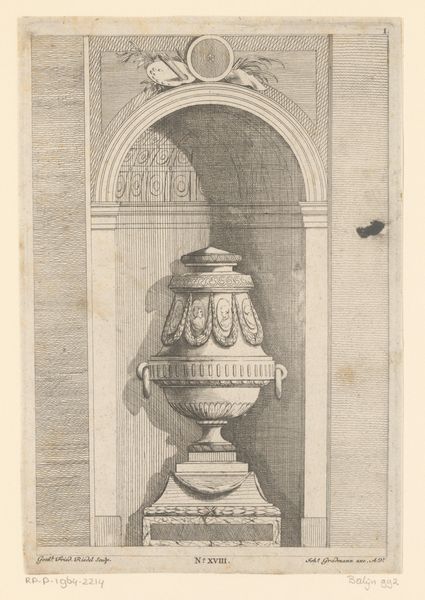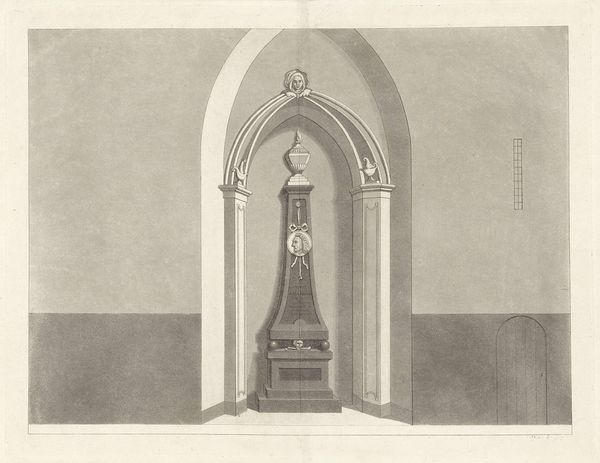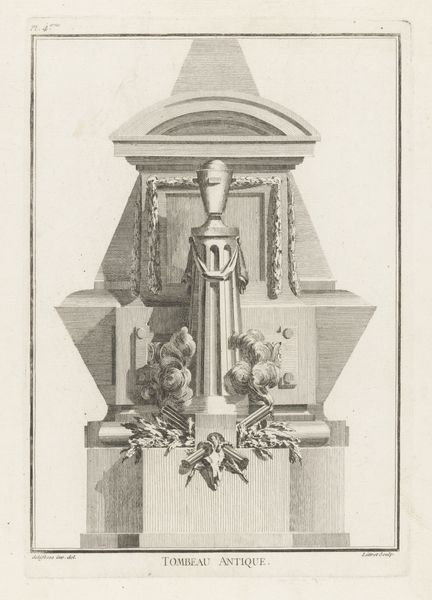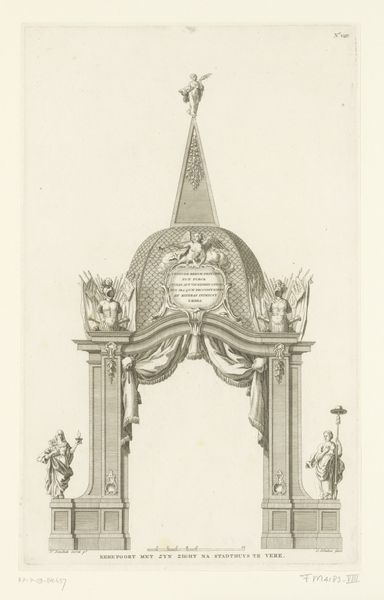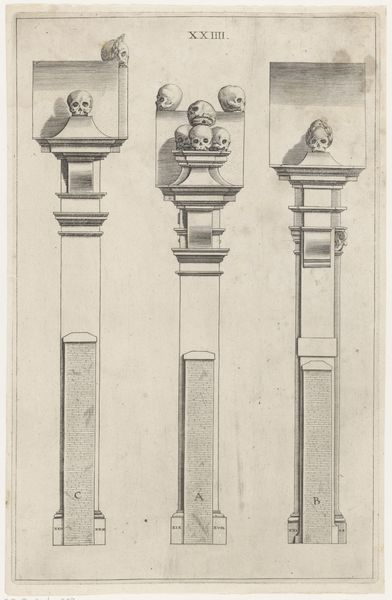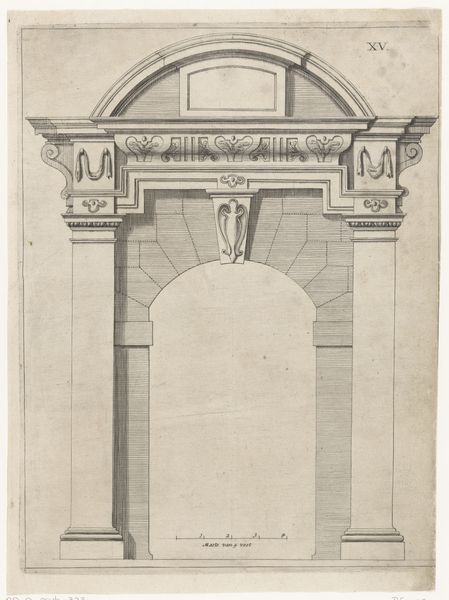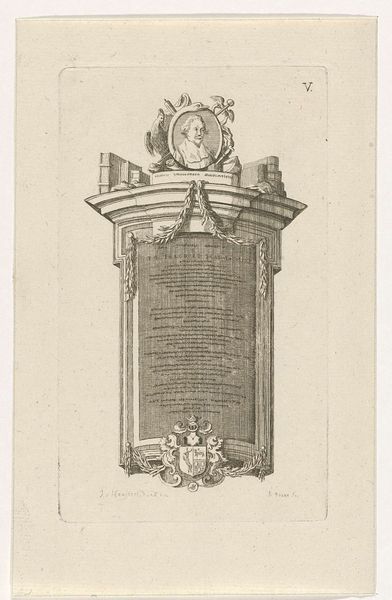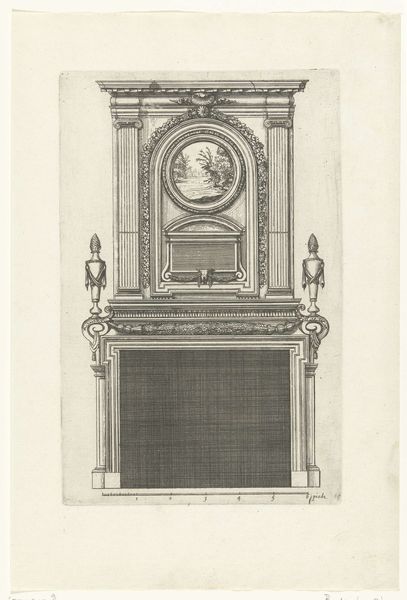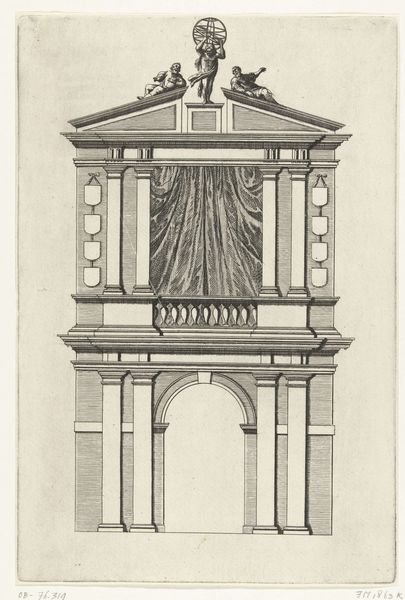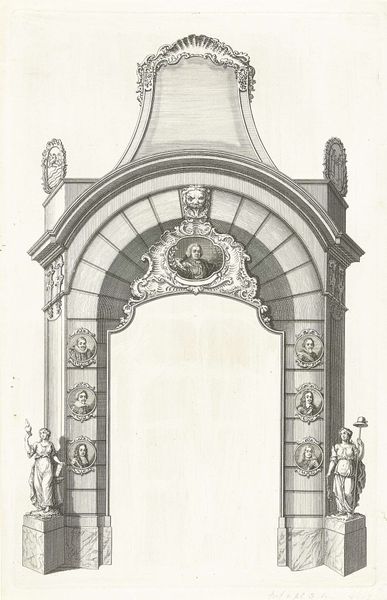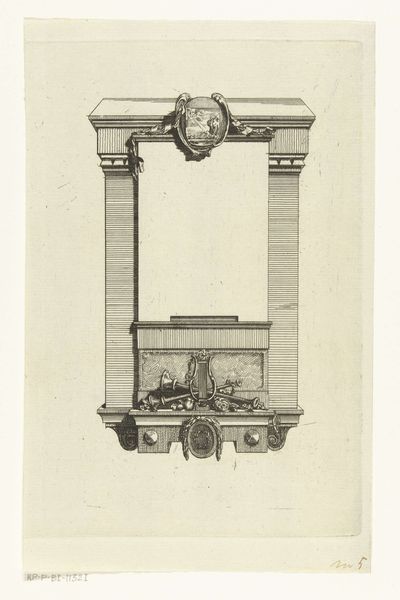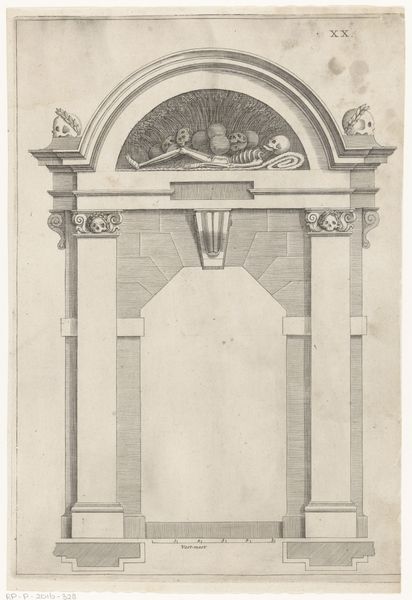
drawing, print, engraving, architecture
#
portrait
#
drawing
#
neoclacissism
# print
#
old engraving style
#
historical photography
#
history-painting
#
academic-art
#
engraving
#
architecture
Dimensions: height 240 mm, width 140 mm
Copyright: Rijks Museum: Open Domain
This print by Caspar Jacobsz Philips, dating to the 18th century, depicts a grave monument for Antoni van Leeuwenhoek. It's made using the technique of etching, where lines are incised into a metal plate with acid, then inked and printed. Consider the qualities inherent in the printmaking process: the crisp precision of line, achieved through careful control of the etching needle and the biting action of the acid. The dense network of lines creates shading, depth, and texture, and the contrasts emphasize the graphic nature of the work. The print is a record of the monument itself, memorializing a famous scientist. While seemingly distant from the immediate concerns of labor and class, the print embodies a cultural value system that elevates intellectual achievement and the power of scientific inquiry. The act of memorializing Leeuwenhoek through a print allows for widespread dissemination of his legacy, creating a collective memory and reinforcing the importance of his contributions. By combining the skilled craftsmanship of the printmaker with the monument's design, the work invites us to contemplate not only Leeuwenhoek's scientific accomplishments, but also the intricate social and cultural processes that shape our understanding of knowledge, labor, and enduring legacies.
Comments
No comments
Be the first to comment and join the conversation on the ultimate creative platform.


